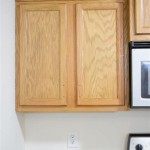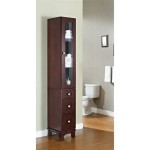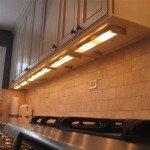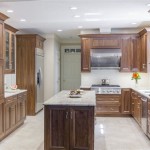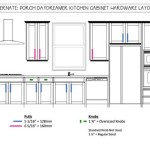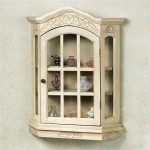Awesome Wall Cabinet Mounting Hardware Ideas
Wall cabinets are ubiquitous in modern homes for their space-saving properties and functionality. Securely mounting them is paramount to ensure safety and longevity. Choosing the right mounting hardware is a critical decision, dependent on factors such as cabinet weight, wall construction, and desired aesthetic. This article delves into various mounting hardware options, exploring their strengths and applications.
Understanding Wall Types and Their Load-Bearing Capacities
Before selecting any mounting hardware, identifying the wall type is essential. Common wall types include drywall, plaster, and concrete or brick. Drywall, also known as gypsum board, is standard in residential construction. It is relatively lightweight and easily damaged, requiring specialized anchors for secure mounting. Plaster walls, often found in older homes, can be more solid than drywall but can also be brittle and prone to crumbling, demanding careful handling and specific anchors. Concrete and brick walls offer the highest load-bearing capacity but require specialized drilling and heavy-duty anchors.
Each wall type has a different load-bearing capability. Drywall, without reinforcement, can typically only support a minimal amount of weight. Plaster walls tend to be more robust but still necessitate careful consideration of the cabinet's weight. Concrete and brick provide the most substantial support but require appropriate drilling techniques and robust anchors to harness their inherent strength. Exceeding the wall's load-bearing capacity can lead to cabinet failure and potential hazards.
To accurately assess the wall's suitability, finding studs is crucial. Studs are vertical framing members that provide structural support. Locating studs allows for direct attachment with screws, significantly increasing the weight-bearing capacity. Stud finders are readily available tools that detect studs behind the wall surface. If studs are not aligned with the desired cabinet placement, alternative anchoring methods must be employed.
Exploring Different Types of Mounting Hardware
Numerous mounting hardware options exist, each designed for specific applications and weight requirements. Selecting the appropriate hardware is crucial for a secure and stable installation. Here are some commonly used options:
*Wood Screws:
These are primarily used when attaching cabinets directly to wall studs. They offer a strong and reliable connection. Select screws of sufficient length to penetrate deeply into the stud, ensuring a secure hold. Pilot holes may be necessary to prevent the wood from splitting, especially when working with hardwoods. *Drywall Anchors:
These anchors are designed for use in drywall when studs are not accessible. Several types of drywall anchors are available, including plastic expansion anchors, self-drilling anchors, and toggle bolts. Plastic expansion anchors are suitable for lighter loads, while self-drilling anchors offer a more robust solution. Toggle bolts are among the strongest drywall anchors, utilizing a butterfly-like mechanism that opens behind the wall to distribute the weight over a larger area. *Plaster Anchors:
Similar to drywall anchors, plaster anchors are designed for use in plaster walls. They often feature wider threads to grip the plaster more effectively. Consider using anchors specifically designed for plaster, as drywall anchors may not provide sufficient holding power. *Concrete Anchors:
These are heavy-duty anchors designed for use in concrete or brick walls. They require drilling a pilot hole into the masonry. Types of concrete anchors include sleeve anchors, wedge anchors, and tapcon screws. Sleeve anchors and wedge anchors provide exceptional holding power for heavy cabinets, while tapcon screws are suitable for lighter to medium loads. *French Cleats:
French cleats are a two-part hanging system consisting of two interlocking beveled pieces of wood or metal. One piece is attached to the wall, and the other is attached to the cabinet. The cabinet is then hung on the wall by interlocking the two cleats. French cleats offer a strong and versatile mounting solution, allowing for easy leveling and adjustability. *Cabinet Hanging Rails:
These are metal rails that are attached to the wall horizontally. Cabinets are then hung onto the rails, distributing the weight evenly. Cabinet hanging rails offer a professional and adjustable mounting solution, particularly suitable for larger or heavier cabinets.The choice of anchor depends on the weight of the cabinet and the type of wall. Always follow the manufacturer's instructions for installation, using the correct drill bit size and torque settings. Overtightening can damage the anchor or the wall, while undertightening can compromise the holding power. If unsure, consult with a professional installer.
Key Considerations for Successful Cabinet Mounting
Beyond selecting the right hardware, several key considerations contribute to a successful and safe cabinet mounting process. These include proper planning, accurate measurements, and attention to detail during installation.
*Accurate Measurements and Leveling:
Before drilling any holes, meticulously measure the desired cabinet placement and use a level to ensure it is perfectly horizontal. Inaccurate measurements can lead to misaligned cabinets, compromising aesthetics and functionality. Use a laser level for increased accuracy, particularly for longer cabinet runs. Mark the stud locations clearly to ensure proper screw placement. *Weight Distribution and Load Capacity:
Carefully consider the weight of the cabinet, both when empty and when fully loaded. Distribute the weight evenly across the mounting points to prevent undue stress on any single anchor. Consult the manufacturer's specifications for the weight capacity of the selected anchors and ensure they are sufficient for the anticipated load. It is always prudent to overestimate the weight to provide a safety margin. *Proper Installation Techniques:
Following the manufacturer's instructions for anchor installation is crucial. Use the correct drill bit size and torque settings. Avoid overtightening, which can damage the anchor or the wall, and undertightening, which can compromise the holding power. If using drywall or plaster anchors, ensure they are properly seated and expanded to maximize their grip. For concrete anchors, clean the drilled holes thoroughly before inserting the anchors to ensure proper adhesion. When using French cleats or cabinet hanging rails, ensure they are securely attached to the wall using appropriate hardware and techniques.Furthermore, consider the aesthetic implications of the mounting hardware. While functionality is paramount, selecting hardware that complements the cabinet design and overall décor can enhance the finished look. Some anchors are designed to be concealed, while others are visible. Choose accordingly based on your aesthetic preferences. For example, decorative screw covers can be used to conceal screw heads for a cleaner appearance.
Regularly inspect the cabinet mounting hardware for any signs of loosening or damage. Over time, vibrations or changes in humidity can cause screws or anchors to loosen. Tighten any loose screws or replace damaged anchors promptly to maintain the integrity of the installation. Neglecting this maintenance can lead to cabinet failure and potential accidents.
In conclusion, selecting the appropriate mounting hardware and employing proper installation techniques are crucial for securely and safely mounting wall cabinets. Understanding wall types, load capacities, and the characteristics of different anchoring systems is essential for making informed decisions. By following these guidelines and paying attention to detail, homeowners can ensure a long-lasting and aesthetically pleasing cabinet installation.

Buy Wall Cabinet Design Upto At 70 Off Wooden Street

Cabinet Hardware Placement Guide

How To Hang A Cabinet Using French Cleat

10 Simple Ideas To Update Your Kitchen Cabinets Jenna Sue Design

Best Kitchen Cabinet Hardware 2024

Space Saving Wall Mount Tv Cabinet Designs

Cabinet Hardware Placement Guide

Best Kitchen Cabinet Hardware 2024

35 Tv Wall Ideas For A Chic Functional Entertainment Hub

Best Hardware For White Shaker Cabinets Lily Ann
Related Posts


